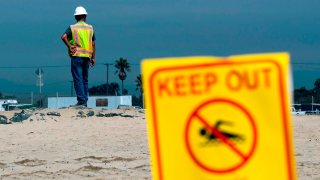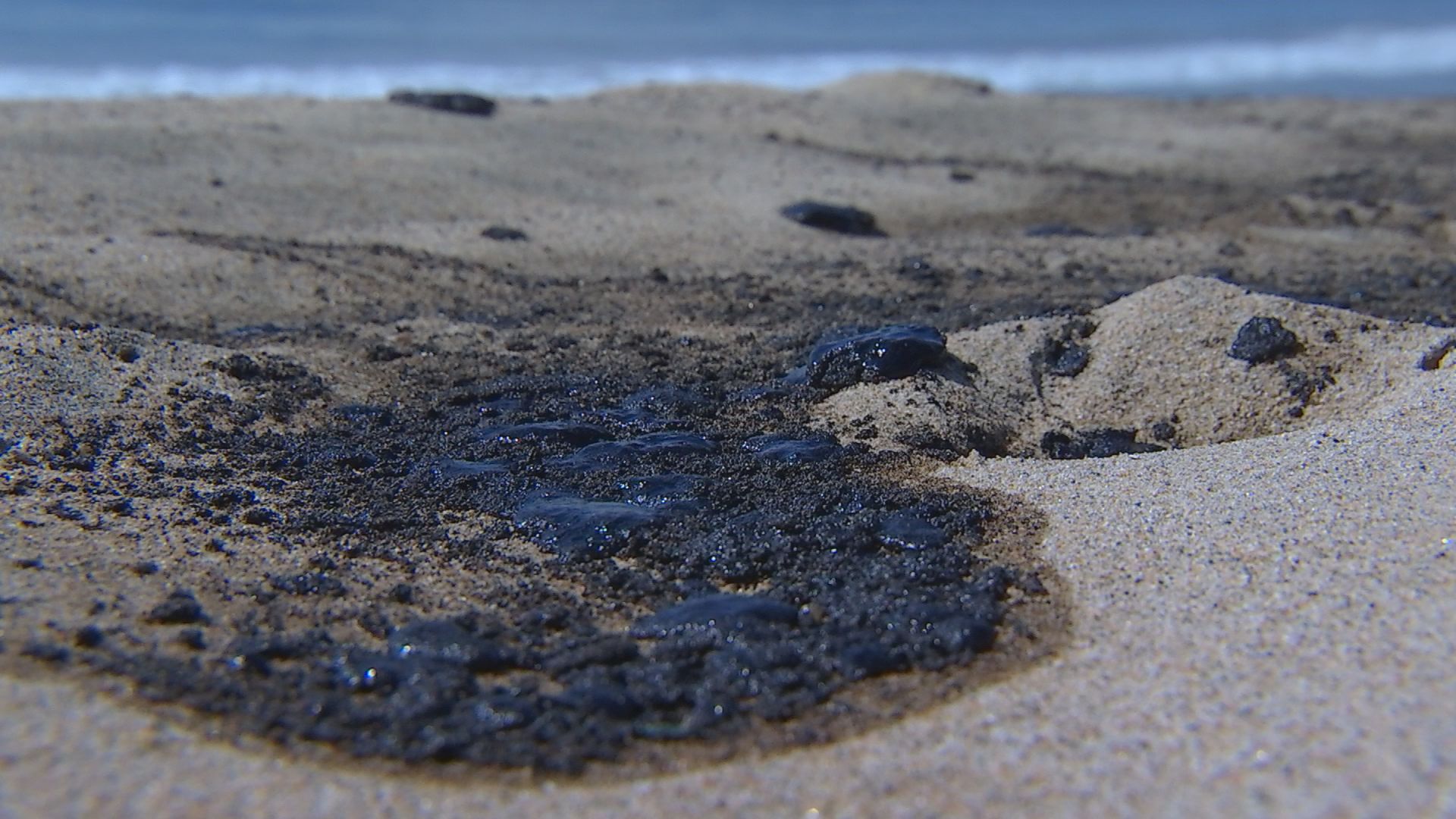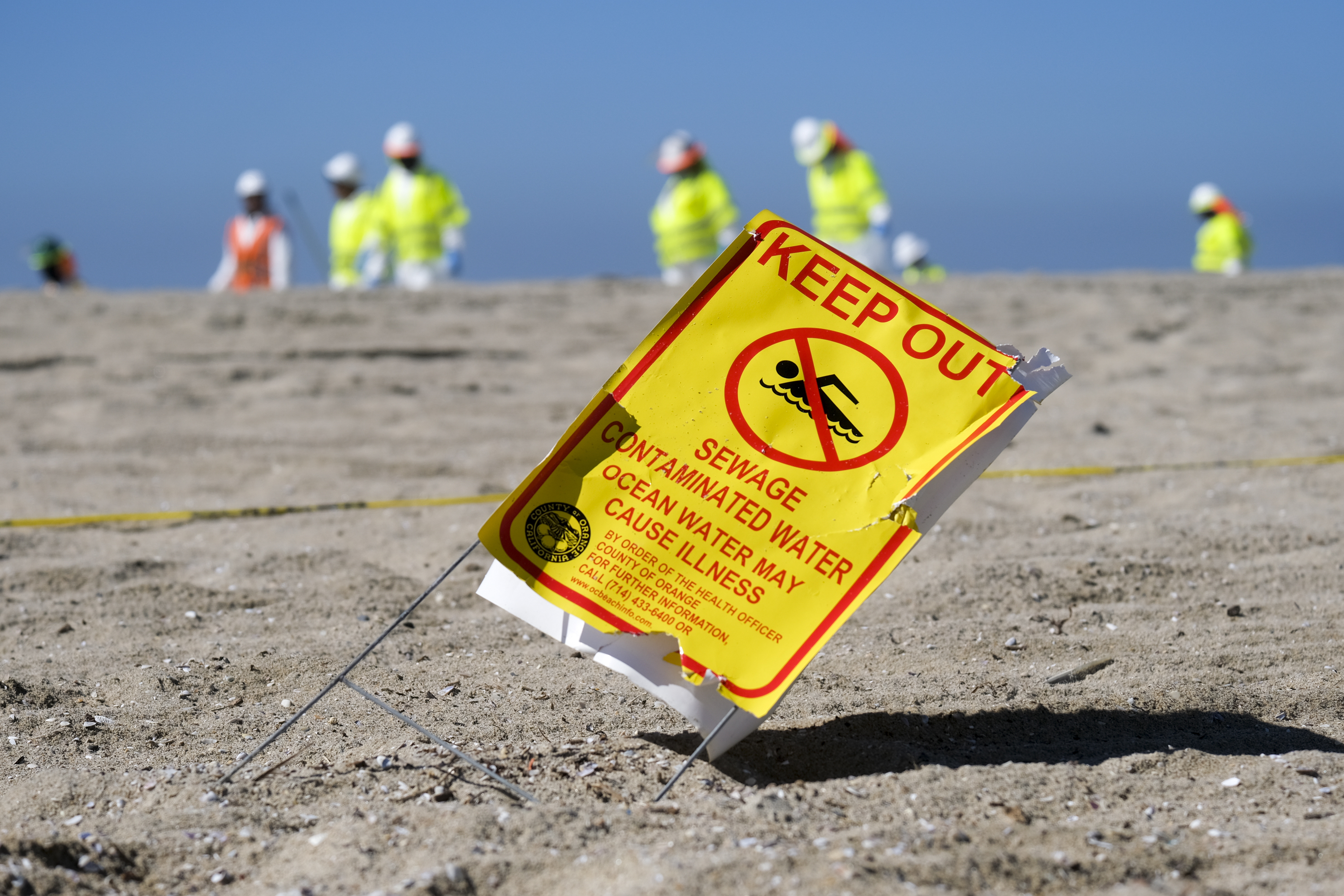
A class action lawsuit was filed Thursday on behalf of a surf school against the operator of an oil pipeline that leaked thousands of gallons of oil into the ocean off the Orange County coast.
The lawsuit was filed by law firm Cotchett, Pitre, & McCarthy on behalf of Huntington Beach's Banzai Surf School against Amplify Energy Corp., a Houston-based company that operates three offshore oil platforms south of Los Angeles. The school has operated for decades in the Orange County seaside community.
The lawsuit comes nearly a week after a leak in the 17.7-mile pipeline from an offshore oil rig to the shore spilled tens of thousands of gallons of oil into the Pacific Ocean off Huntington Beach. Evidence has emerged that a ship’s anchor likely snagged and dragged a section of the underwater pipeline, bending it like a bow and creating a 13-inch split.
The class action lawsuit states that plaintiffs and members have suffered “business and/or commercial losses by virtue of their proximity to the spill, and the stigma associated with operating so near to the spill. This lawsuit is brought to recover business an/or commercial losses and other damages by owners/operators of local business in close proximity to the spill.”
Get Southern California news, weather forecasts and entertainment stories to your inbox. Sign up for NBC LA newsletters.
NBC4 has reached out to Amplify Energy Corp. for a response.
Banzai is a year-round surf school that has been in operation for decades.
The pipe was split open and a nearly mile-long section apparently pulled along the ocean floor, possibly by “an anchor that hooked the pipeline, causing a partial tear,” federal transportation investigators said.
“The pipeline has essentially been pulled like a bow string,” said Martyn Willsher, CEO of Amplify Energy Corp., which operates the pipeline. “At its widest point, it is 105 feet (32 meters) away from where it was.”
Huge cargo ships regularly cross above the pipeline as they head into the massive Los Angeles-Long Beach port complex. They are given coordinates where they are to anchor until unloading.
Even when anchored, cargo ships continually move from shifting winds and tides. If a ship fails to properly set its anchor in the ocean floor, those forces of nature come into play and can push the ship and drag the anchor along the bottom, potentially catching anything in its way, said Steven Browne, a professor of marine transportation at California State University Maritime Academy.
Anchors on large ships can weigh 10 tons or more and are attached to hundreds of feet of thick steel chains. “Whatever the anchor gets fouled on will come along with the ship,” Browne said.
The heavy crude entered the ocean off Huntington Beach. It then washed onto miles of beaches and a protected marshland.
The beaches could remain closed for weeks or longer, a major hit to the local economy. Coastal fisheries in the area are closed to commercial and recreational fishing. On shore, animals rescuers have been pleasantly surprised to find few birds covered in oil.
The timeline of events around the spill remain unclear.
A possible spill was first reported by a commercial ship at 8:22 p.m. Friday near a cluster of boats that were anchored off Huntington Beach. That sighting was supported by a report to the National Response Center, a hazardous spill hotline staffed by the Coast Guard, at 2:06 a.m. Saturday from the National Oceanic and Atmospheric Administration, which said satellite images showed the strong likelihood of an oil slick.
Residents in nearby Newport Beach had also complained Friday evening about a strong stench of petroleum, and police put out a notice to the public about it.
Federal pipeline safety investigators put the time of the spill at 2:30 a.m. Saturday, which is when they said an alarm sounded in the control room of an Amplify-owned offshore oil rig. It was an alert that pressure had dropped in the pipeline, indicating a possible leak.
The Pipeline and Hazardous Materials Safety Administration said the pipeline was shutoff at 6:01 a.m. Saturday.
Willsher, however, said the company was not aware of the spill until it saw a sheen on the water at 8:09 a.m.
The pipeline company did not report the spill Saturday until either 8:55 a.m., based on a state report, or 9:07 a.m., according to PHMSA. At that point, the Coast Guard had been on the water for a couple hours and discovered the spill as Amplify was making the report.
The company’s spill-response plan calls for the immediate notification of a spill. Criminal charges have been brought in the past when a company took too long to notify federal and state officials of a spill.
The break in the line occurred about 5 miles offshore at a depth of about 98 feet (30 meters), investigators said. Those findings were included in an order from the Department of Transportation that blocked the company from restarting the pipeline without extensive inspections and testing.
The order did not identify the source of the investigators’ information, and agency officials did not immediately respond to a request for further comment.



